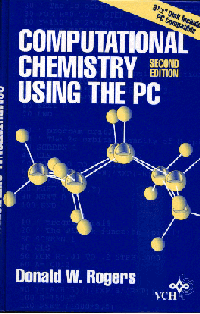
|
Computaional Chemistry (2nd Edition) Using The PC (ISBN 1-56081-672-4 VCH Publishers, Inc., 1994, NYC,NY) is an introduction to computational chemistry, molecular mechanics, and molecular orbital calculations using a personal microcomputer. It assumes no special computational skills or advanced mathematical training, except for previous knowledge of BASIC and college-level calculus.The first part of the book provides a tool box of computational methods ranging from matrix inversion to curve fitting. Later chapters are devoted to molecular orbital calculations, molecular mechanics, and molecular graphics. The reader will gain a basic understanding of contemporary methods in molecular modeling as well as considerable insight into molecular quantum mechanics. Short theoretical introductions precede each topic. Computaional Chemistry Using The PC, 2nd Edition, is suitable for both classroom use and individual study, with 50 computer projects given. All programs presented run on an IBM compatible 80386 or 486 - based machine with 640K memory and a math coprocessor, avoiding the necessity of special or expensive microcomputers. Early programs are included with the book on a single diskette, while more elaborate programs are available at moderate prices from sources listed in the appendix. |